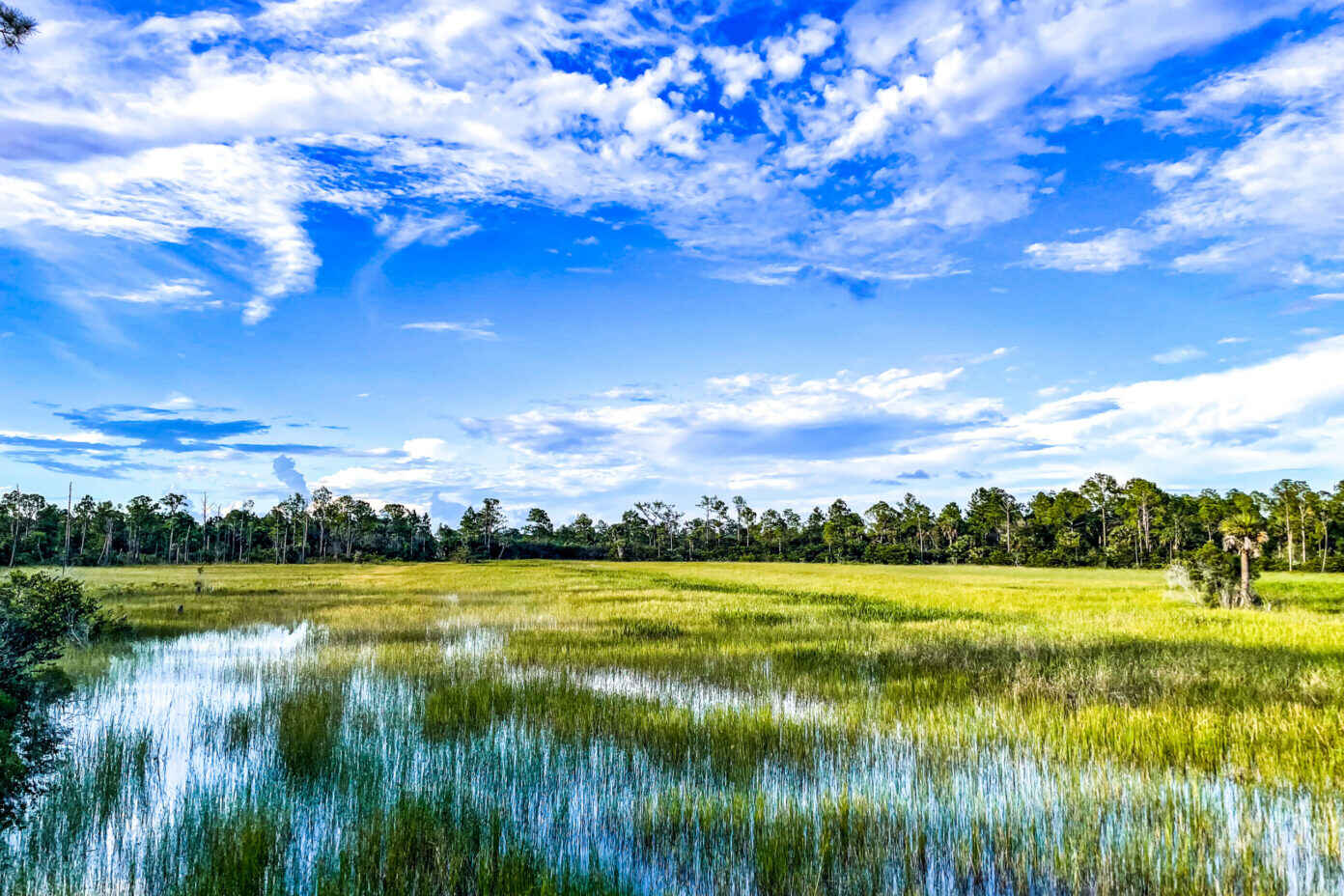Wetlands Essential to Combatting the Health Effects of Climate Change Are at Risk
September 19, 2023
Overview
Wetlands absorb and slow floodwaters, help alleviate drought conditions, absorb pollutants, and when left undisturbed, store more carbon than forests. Despite their amazing natural features that help counteract the impacts of climate change, many states currently do not protect wetlands beyond what the Clean Water Act requires, and recently, the U.S. Supreme Court eliminated protections for wetlands that have been in place for decades.

Wetlands, swamps, bogs, or marshes — whatever you like to call them — protect us against health threats from climate change, but are vastly misunderstood and underappreciated. Wetlands are nature’s sponges — they absorb and slow floodwaters during rain storms to help prevent flooding, and help alleviate drought conditions by releasing water during dryer periods. But the benefits don’t end there, wetlands also filter water and absorb pollutants in water, recharge groundwater, and when left undisturbed, wetlands store more carbon than forests. But these amazing natural features are under threat from climate change and the U.S. Supreme Court just eliminated protections for wetlands that have been in place for decades
Wetlands aren’t always viewed for their benefits, and some view them as a hindrance to development. In fact, many wetlands in the U.S. have already been filled. By 1998 more than 17 million acres of wetlands in the Mississippi and Missouri River basins had been destroyed, which left cities and houses more susceptible to flooding. A study by the U.S. Fish and Wildlife Service found that those wetlands could have held 1,000 football fields of water to a depth of four miles. When wetlands are destroyed, the carbon they store is released into the atmosphere, and the water that used to be absorbed by those wetlands must find another outlet. Once wetlands are filled (to make room for a housing development, road, or farm) the flood prevention, filtering and climate mitigation benefits disappear.
Water pollution is often thought of as an accidental, or unknown, spill of a pollutant into a water, but the U.S. has a complex system of state and federal laws that authorize intentional discharges of pollution to waters of the United States via a permitting system. Permits issued under the Clean Water Act authorize intentional acts, including the discharge of pollution, or fill of wetlands. The term “waters of the United States” is important because it outlines what water bodies are subject to permitting requirements or restrictions for pollution discharges and for wetland fills.
In May, the U.S. Supreme Court, in Sackett v. EPA, did not dwell on the benefits of wetlands, instead focusing on the potential nuisance that landowners wishing to build on their land may face if wetlands are found on their property. Since the 1970s, the Clean Water Act has required a permit to fill “waters of the United States” — a term defined for decades by courts and federal agencies (the Environmental Protection Agency and the Army Corp of Engineers) to include wetlands “adjacent” to streams, oceans, rivers and lakes. While the common definition of “adjacent” means “near” or “contiguous,” the U.S. Supreme Court eliminated longstanding protections for adjacent wetlands that lack “a continuous surface connection” to these streams, oceans, rivers, and lakes in the Sackett opinion.
At a time when we are seeing increased flooding fueled by climate change, the Court’s limitation leaves groundwater and surface water susceptible to pollution that is transferred to rivers and streams, increases flood risk, and leaves many wetlands that previously helped limit climate change at risk. While individual states can adopt state laws to protect these wetlands, many states currently do not protect wetlands beyond what the Clean Water Act requires and some states have laws preventing the state agency from covering more waters or being more stringent that the Clean Water Act. On the other hand, some states are already implementing laws meant to provide broader protections for wetlands.
What happens now? Federal agencies recently issued a new regulation to comply with the Supreme Court’s ruling, but federal or state legislatures will need to act to protect wetlands and the public health benefits they provide. For example, as Congress considers a new Farm Bill, there will be opportunities to strengthen incentives for conserving wetlands. Proponents had called for steps to be taken in this direction even prior to the Sackett decision. That decision has only made the need more acute.
This post was written by Betsy Lawton, Deputy Director, Climate and Health, Network for Public Health Law.
The Network for Public Health Law provides information and technical assistance on issues related to public health. The legal information and assistance provided in this document do not constitute legal advice or legal representation. For legal advice, readers should consult a lawyer in their state.
Support for the Network is provided by the Robert Wood Johnson Foundation (RWJF). The views expressed in this post do not represent the views of (and should not be attributed to) RWJF.
